|
-
10th February 20, 11:47 PM
#1
 Front apron left pleat not laying flat Front apron left pleat not laying flat
The left pleat of my brand new Balmoral traditional 8-yard Scotweb/Clan.com 13 oz wool kilt's front apron does not lay flat (i.e., it sticks out):
leftpleat.jpg
leftpleat2.jpg
Robert MacDonald talks about this issue at 2:16 of his video and explains why he always waits to iron this pleat until he has the customer try it on for the first time (which obviously wasn't possible in my case):
https://youtu.be/Ivv8hwr0TZE?t=136
Is it possible to fix this by resetting the pleat with a steam iron? How would I go about doing that? Do I need to remove the original pleat first? If so, how?
Last edited by Dreaghann; 11th February 20 at 11:07 PM.
Reason: Added info about kilt type, fabric, age
-
-
11th February 20, 02:37 AM
#2
Yes, steaming the apron edge will help in the short term, but if your apron edges are kicking outward it is usually due to a combination of things in the construction.
One - is that the apron may have not enough tapered shape to it or the apron edge crease may have been incorrectly pressed or lost over time. The reason an apron is tapered, to be wider at the hips than at the waist, is to allow the apron edges to gently wrap around the legs and not kick out.
One way to check - is to steam the apron with the kilt on, and see if the apron edge falls straight down the side of your leg with the width of the first pleat the same from the hips, down to the Selvedge.
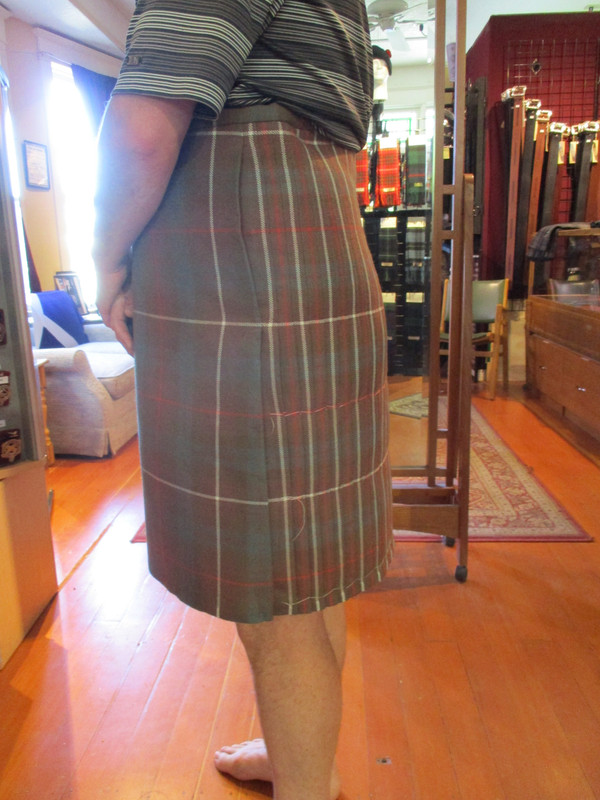
Another way to check the apron taper is to lay the kilt on a table, raise the Fell Area so the pleats lay flat and parallel and see if the width of the first pleat is the same, all the way down.
If the width is wider at the bottom than it is at the hips, the apron taper may be the problem Perhaps the apron is shaped or sewn incorrectly.
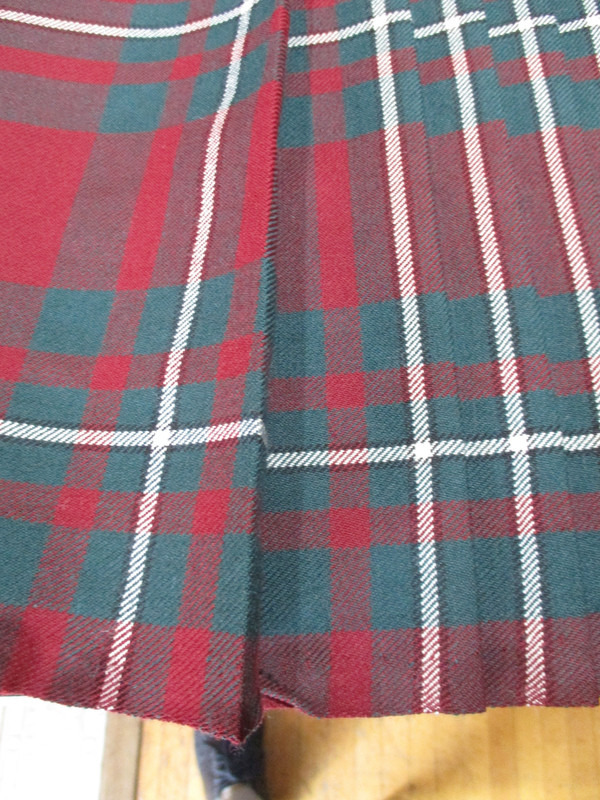
The next possible cause may be the shape and depth of the deep or reverse pleat.
Just under the apron should be a pleat that is slightly deeper than the back pleats. This deep pleat on the left and reverse pleat on the right are there to allow enough room for the apron taper to take its curve.
You can identify the deep and reverse pleats by the small turned up portion forming a small hem.
If the deep/reverse pleat is not deep enough or was pressed and sewn incorrectly you will again see the pleat width wider at the bottom than at the hips.
This can sometimes be corrected by re-pressing the deep/reverse pleat inner crease. Sometimes the small hem must be re-shaped.
But I am sorry, but it will usually take an experienced kiltmaker to identify the underlying cause of the apron kick out and a experienced eye to fix it.
This is actually a very common problem. We see apron edge kick out all the time. It takes an experienced kiltmaker to shape and stitch the aprons so the edges do not kick out and many lower priced kilts, off-the-rack kilts, or home-made kilts, will usually suffer from apron kick out.
If you got the kilt new from a maker with apron kick, it will usually require a different eye of a different maker maker to fix it.
Last edited by Steve Ashton; 11th February 20 at 02:42 AM.
-
The Following 2 Users say 'Aye' to Steve Ashton For This Useful Post:
-
12th February 20, 12:02 AM
#3

Thank you so much for your prompt and detailed reply.
I should have included in my original post the type, quality, and age of the kilt: It's a brand new Scotweb/Clan.com Balmoral 8-yard 13 oz. wool with kilting selvedge kilt. While it's not as expensive or as high-quality as say a Kinloch Anderson kilt or a truly custom-made kilt measured and fitted in person, it's definitely not the cheapest kilt either. I've owned it for less than 48 hours. (I've now edited the OP to include that info.)
I would be grateful if you could point me toward an experienced kilt-maker in Tokyo. Otherwise, I'm afraid I won't be able to have it fixed professionally anytime soon.
To my inexperienced eye, it seems like the pleat just needs to angle out slightly more at the bottom to get it to lay flat, but another issue seems to be that the deep/reverse pleat is not any deeper (if not less deep) than the back pleats, and still another is that the pleat turns sharply inward at the selvedge.
Here's a photo of the front apron and back pleats with the fell raised. The first pleat doesn't quite seem parallel to my eye. You'll also notice that the pleat is angled sharply in at the selvedge. Could this be the cause?

Here's the interior:
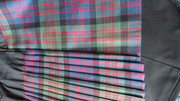
And these show the depth of the reverse pleat. Would you consider this deep?
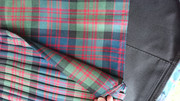
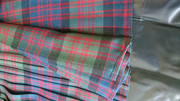
Does anything seem amiss to you in these photos?
How would one steam it while wearing it without getting burnt?
Last edited by Dreaghann; 20th February 20 at 05:48 PM.
Reason: Added better photo and rephrased a sentence for improved accuracy and tone
-
-
12th February 20, 08:43 AM
#4
I think this is the same problem I have - or would have if I did not work it out as I am making my kilts.
It is simply due to using a flat fabric to wrap a curved shape.
I think I can see not only the edge pushing out but the apron distorting at about level with the lower edge of the fell stitching.
Try making a small horizontal fold on the inside edge of the pleat, making it only about a centimetre shorter, or maybe even less, fairly high up.
I can't show you an example of this as I hide it in the waistline, but if it works to pull in the pleat and straighten the apron then - because wool is malleable you can make a couple of rows of stitches close to that inner fold and tighten them to draw it up shorter. Press the shortened fold just enough to flatten it and all should be well. If the stitches start as high up as can be reached easily, and head down towards the selvage you should be able to tighten and secure the thread temporarily, try on to see if it is shortened enough then sew a bit more and tighten again. Pull on the thread lightly, it isn't gathering up but gently persuading to be shorter.
I presume to dictate to no man what he shall eat or drink or wherewithal he shall be clothed."
-- The Hon. Stuart Ruaidri Erskine, The Kilt & How to Wear It, 1901.
-
The Following 2 Users say 'Aye' to Pleater For This Useful Post:
-
13th February 20, 06:35 PM
#5

Thank you so much for sharing your expertise! I'll try this the next time I have time to fiddle with it and then report back here.
Thanks again!
-
-
16th February 20, 11:45 AM
#6
This sounds like something a good taylor could do if a person is not handy with a needle and thread. It also explains why my off the rack kilts lie fine on me. I have almost no derriere, so if it is cut flat, it lies flat on me!
Dave
 Originally Posted by Pleater

I think this is the same problem I have - or would have if I did not work it out as I am making my kilts.
It is simply due to using a flat fabric to wrap a curved shape.
I think I can see not only the edge pushing out but the apron distorting at about level with the lower edge of the fell stitching.
Try making a small horizontal fold on the inside edge of the pleat, making it only about a centimetre shorter, or maybe even less, fairly high up.
I can't show you an example of this as I hide it in the waistline, but if it works to pull in the pleat and straighten the apron then - because wool is malleable you can make a couple of rows of stitches close to that inner fold and tighten them to draw it up shorter. Press the shortened fold just enough to flatten it and all should be well. If the stitches start as high up as can be reached easily, and head down towards the selvage you should be able to tighten and secure the thread temporarily, try on to see if it is shortened enough then sew a bit more and tighten again. Pull on the thread lightly, it isn't gathering up but gently persuading to be shorter.
-
-
18th February 20, 06:13 PM
#7
The other culprit can be not making the kilt big enough around at the hips. If you measure waist and hips, and use those measurements directly, you're in trouble if the person has a belly. In the kilt below, you'll see that the kilt is only big enough to go around the person snugly at both waist and hip. That means the kilt will be kind of a tilted cylinder, with the pleats on an angle instead of hanging straight down. The first pleat flops open under the influence of gravity.

Here's the same guy in a kilt where the kiltmaker added a few inches to the hip measurement, and then split the apron and pleats at the hips evenly. The kilt now hangs straight down in the front, no flopping first pleat. I've made kilts where I've had to add 5" or more to the hip measurement to have the kilt hang properly. Note - this is a case where sporran hangers are the best solution (a sporran strap would pull the kilt in under the belly and ruin the nice straight hang).

Many large guys also have a bigger waist than hip measurement, so adding inches at the hips to achieve a straight hang in the apron ALSO allows you to shape the back of the kilt to snug it into the small of the back. This not only helps the kilt hang better in the back, but it also prevents the kilt from slipping south, even on a guy with a relatively flat butt (because even when a guy THINKS he as no butt, he really does have something there).
Last edited by Barb T; 18th February 20 at 06:18 PM.
-
The Following 2 Users say 'Aye' to Barb T For This Useful Post:
-
18th February 20, 11:25 PM
#8
On the issue that Barb brings up, I know of one kiltmaker who started learning in my shop and was taught my system but never did catch on to the idea of ease. He is now off on his own but still makes the rear hip split exactly what he measures leaving no ease in the back.
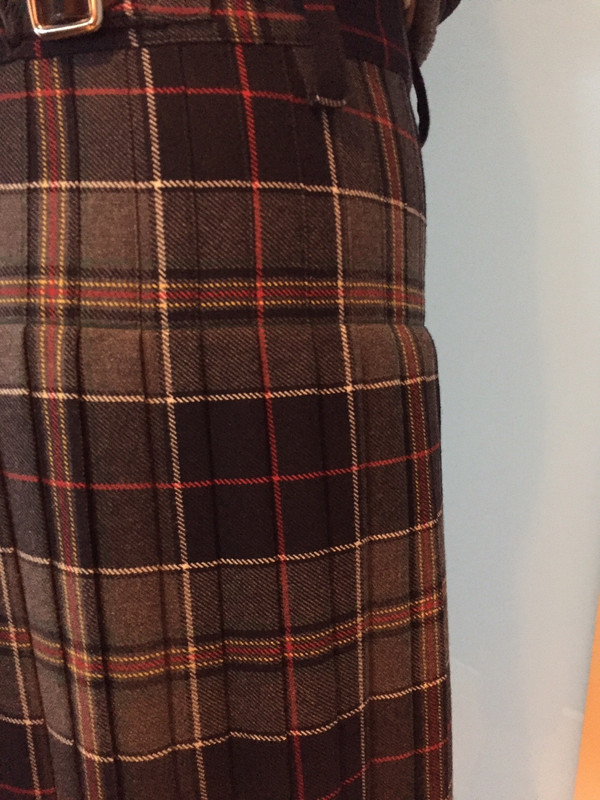
The causes the bottom of the Fell, at the steeking line, to pull in. This then causes every kilt he makes have the left and right apron edges, gape open.

Notice that even pressing and steaming the apron edge to curl inward, that there is still a gape at the first pleat.
Now, while this is different than the issue of the apron edge flipping outward it is still an illustration that kilt making is just a bit more complex than most people's first impression.
Last edited by Steve Ashton; 18th February 20 at 11:30 PM.
-
The Following 3 Users say 'Aye' to Steve Ashton For This Useful Post:
-
19th February 20, 10:45 AM
#9
Oh dear - the kilt as corset - it must put a lot of strain on everything.
My name of Pleater is not from kilt making but from English smocks. The way they are gathered and then decorated and the gathering threads released gives a lot of elasticity to the garment at a time when elastic was not yet available.
Looking again at the photos in the OP - it isn't really possible to make out the outline of the kilt - if the turning out of the pleat and the bulge in the apron is because the garment as a whole is 'skimpit' then it is a fitting problem rather than shaping.
I presume to dictate to no man what he shall eat or drink or wherewithal he shall be clothed."
-- The Hon. Stuart Ruaidri Erskine, The Kilt & How to Wear It, 1901.
-
The Following 2 Users say 'Aye' to Pleater For This Useful Post:
-
20th February 20, 05:44 PM
#10
-
Tags for this Thread
 Posting Permissions
Posting Permissions
- You may not post new threads
- You may not post replies
- You may not post attachments
- You may not edit your posts
-
Forum Rules
|
|























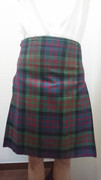
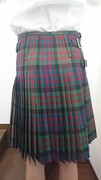
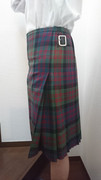
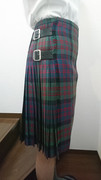







Bookmarks